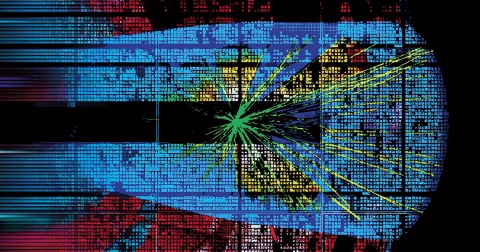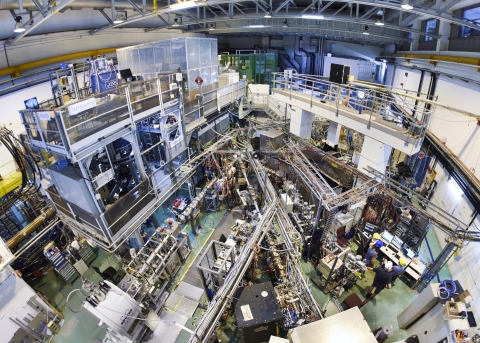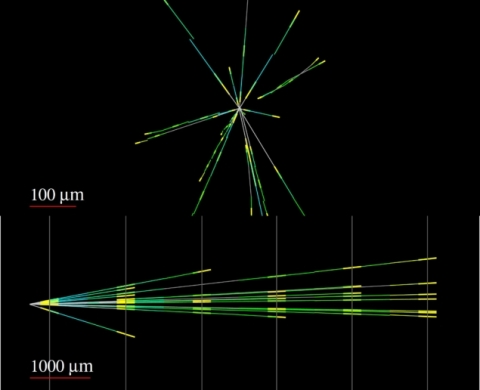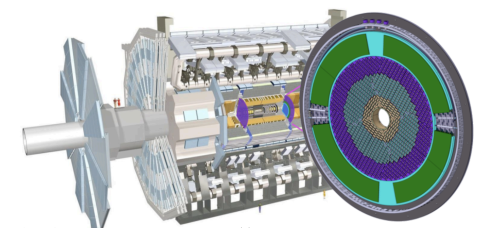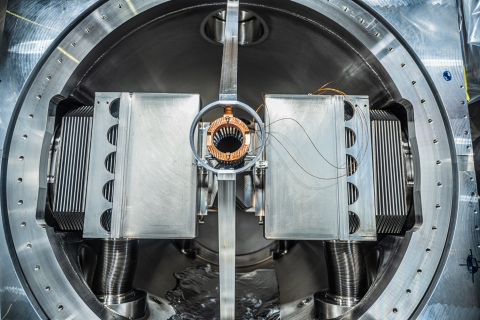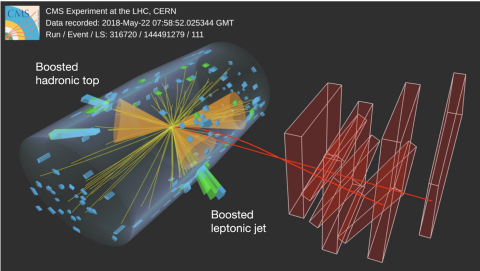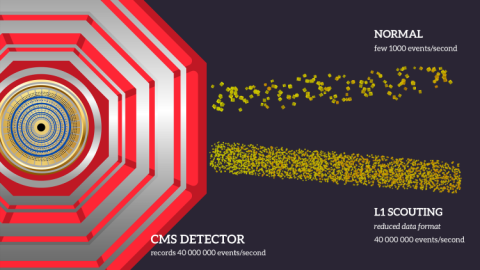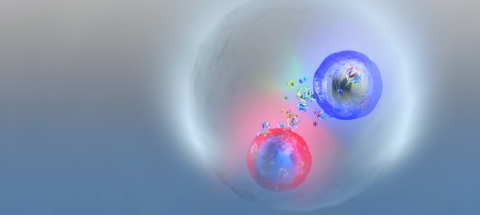July 2025 - September 2025
G4HepEm: accelerated electromagnetic shower simulation for the HL–LHC
When the High–Luminosity LHC (HL–LHC) starts delivering data, the volume of simulated events required to control systematic uncertainties will rise sharply. In ATLAS, detailed detector simulation already consumes a large fraction of the computing…
Read moreISOLDE charts the shores of the islands of inversion
For decades, CERN’s ISOLDE (Isotope Separator On-Line Device) facility has been a global leader in exploring the behaviour of exotic nuclei far from stability. By delivering beams of short-lived isotopes and enabling their study with advanced…
Read moreBreakthrough: Coherent Spectroscopy with a Single Antiproton Spin
BASE physicist Barbara Latacz in front of the experiment’s cryostat. This cylinder, which is kept at 4 kelvins (-269°C), houses the system of traps that cool and measure the antiprotons and a very strong magnet. (Image: CERN) In a significant…
Read moreWelcome to the Collider Neutrino Era!
Searches for new fundamental particles and interactions at hadron collider experiments such as the SPS, the TeVatron, and the LHC have traditionally focused on heavy and relatively strongly interacting states. The two general-purpose experiments of…
Read moreOLC-R / OLC-1 refurbishment in a Nutshell
For Phase-2, CMS DAQ will undergo a major increase of its capacities to match HL-LHC performance and the related CMS physics program. Compared to the present situation (Run3), the post-trigger data throughput will increase from 2 Tb/s today to 50 Tb…
Read moreThe ATLAS High Granularity Timing Detector
Introduction Given the challenging conditions posed by the HL-LHC, ATLAS is currently in the process of constructing a novel precision-timing silicon detector, the High-Granularity Timing Detector (HGTD), which provides a time resolution of 30 to 50…
Read moreSMOG(2) at LHCb: a space experiment and a bowling alley
A famous aphorism, sometimes attributed to Max Planck, goes “When you change the way you look at things, the things you look at change". Since 2011, the LHCb experiment at the LHC has employed a System for Measuring Overlap with Gas (SMOG) to inject…
Read moreAn all-round boosted chase for supersymmetry
It is rare for a theory to inspire as much experimental attention as supersymmetry has. CMS completed more than 40 SUSY searches in Run 2 alone, reflecting how compelling this framework remains in the quest for new physics. SUSY proposes that every…
Read moreHow CMS records all 40 million events per second
Traditional data taking workflows at the LHC experiments rely on a filtering step – called Level-1 trigger – that reduces the amount of data to a manageable level. The Level-1 trigger is implemented in hardware, takes only a few…
Read moreBound state, found state - ATLAS ties the knot on top quark pair production at threshold
Physics at the LHC often advances by pushing into regimes once thought unreachable. One such frontier is the precise study of top-anti-top quark pairs (tt̄) near the production threshold, where subtle quantum effects may leave their imprint. A few…
Read more
